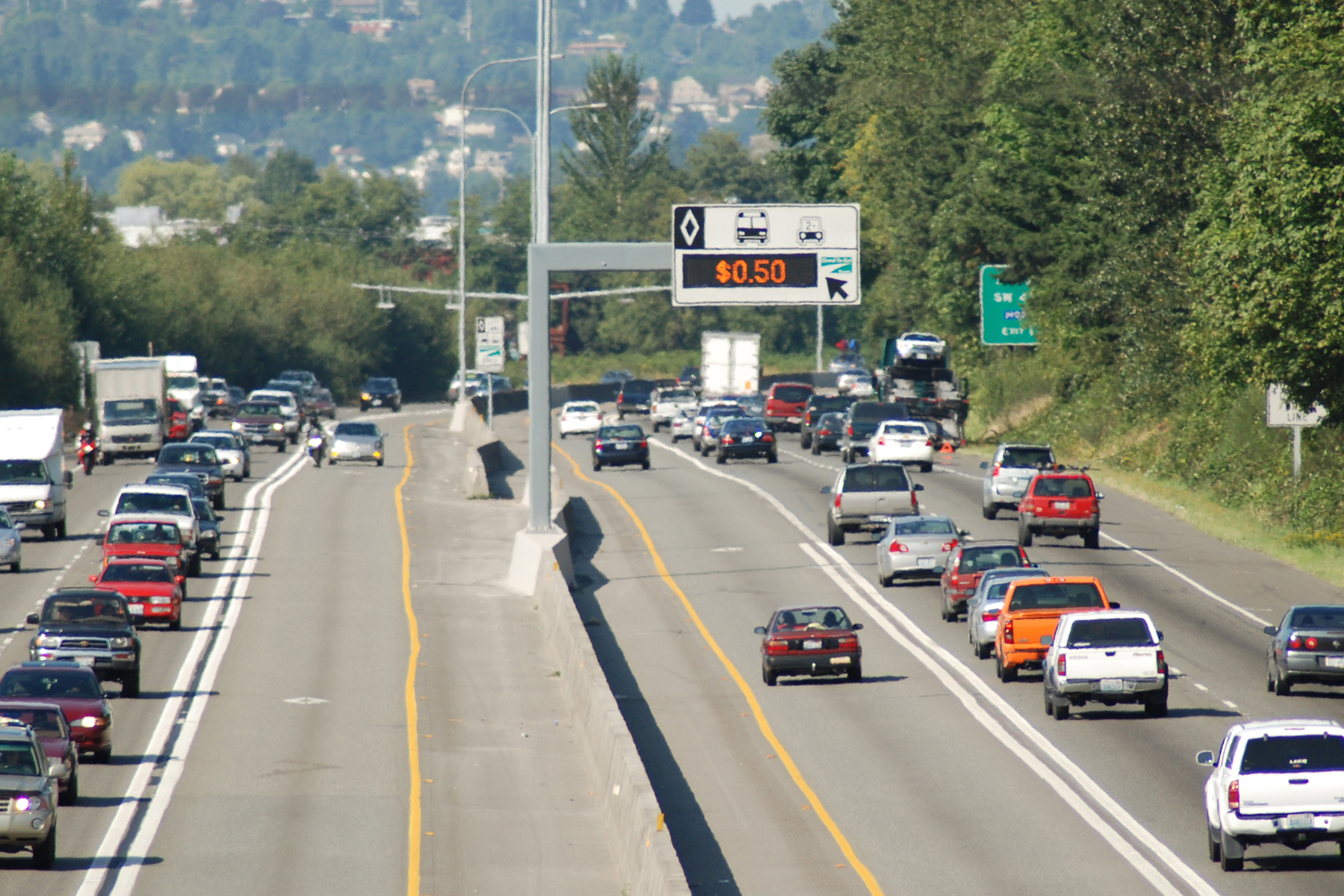In August 2014, WSDOT changed the access controls for the high occupancy toll (HOT) lanes on State Route (SR) 167. The lanes were initially designed and implemented to allow access at only six points northbound and four points southbound. Since August 23, 2014, free access has been allowed into and out of the HOT lane. To look at the effects of that change, researchers examined the performance of the corridor, including both the HOT lanes and the parallel general purpose (GP) lanes, and the volumes of use and travel times experienced. They also examined the amount of revenue collected, the amount of toll evasion that could be observed, collision frequency and severity, and customer and transit attitudes toward the new access rules.
The changes that occurred in the corridor since the change in access rules were complex.
In general, traffic volumes increased in the corridor. Traffic volumes rose between 1 to 22 percent in the peak period during the first six months after the access rule change and remained at those levels during the second six months.
Travel times degraded slightly in both the GP and HOT lanes in the corridor. Travel time and reliability generally worsened in the peak directions in the peak periods, the time periods when the HOT lane is meant to provide the most travel benefits. However, because a background trend of growing traffic volumes and congestion in the corridor already existed, the study could not conclude whether the increase in congestion could be attributed to the change in access rules.
One specific performance concern was that the unfettered ability for vehicles to enter and exit the HOT lane would cause the HOT lane to slow in relation to the GP lanes. The term “friction” is used to describe the fact that one lane generally slows down “in sympathy” with slowing in neighboring lanes. Analysis found that with the opening of continuous HOT lane access, the friction effect became somewhat stronger in 25 to 27 of 30 locations evaluated. This means that friction slowing in the HOT lanes was more pronounced with the open access HOT lanes than under restricted access. Friction slowing causes prices to rise in the HOT lane as the toll pricing algorithm attempts to maintain free flow speed in the HOT lane. The result of greater friction was a higher price paid per vehicle for HOT lane travel under similar GP lane conditions.
After the access rule change, prices in the HOT lane increased faster and earlier in the day, and stayed higher longer in the peak period, than in the months before the change. Overall, prices increased substantially during the first five months of operation of the new rules, declined somewhat after that, but remained higher than under restricted access control rules.
Total revenue was up substantially for the first five months after the change in HOT lane access rules. After that, revenue dropped but typically still exceeded the revenue obtained before the access rule change.
No statistically significant changes in safety were apparent, and no significant toll gantry avoidance was detected.
The overall reported response from the public toward the changes was positive, with 65 percent of respondents to a survey saying they preferred the open access rules. Transit agencies operating in the corridor also favored the changes.
Authors:
Mark E. Hallenbeck
John Ishimaru
Dmitri Zyuzin
Washington State Transportation Center-UW
Sponsor: WSDOT
WSDOT Technical Monitor: Jennifer Charlebois
WSDOT Project Manager: Doug Brodin

